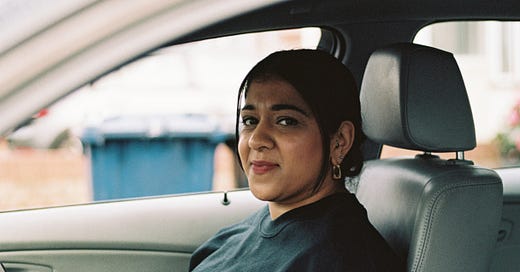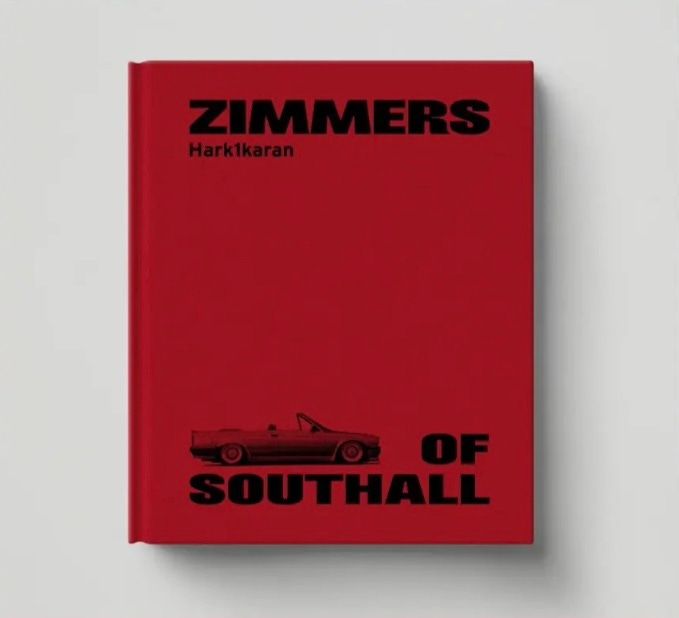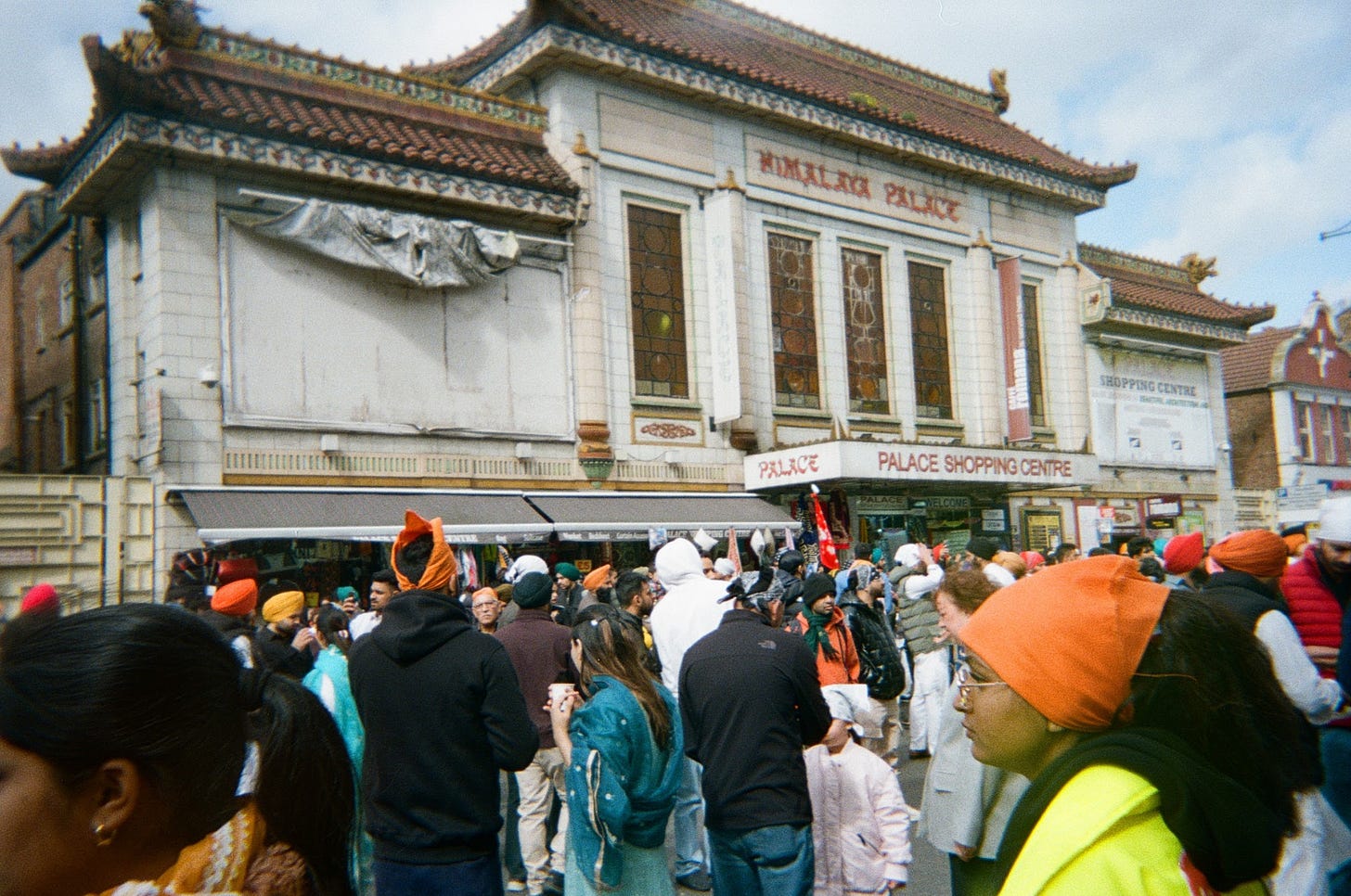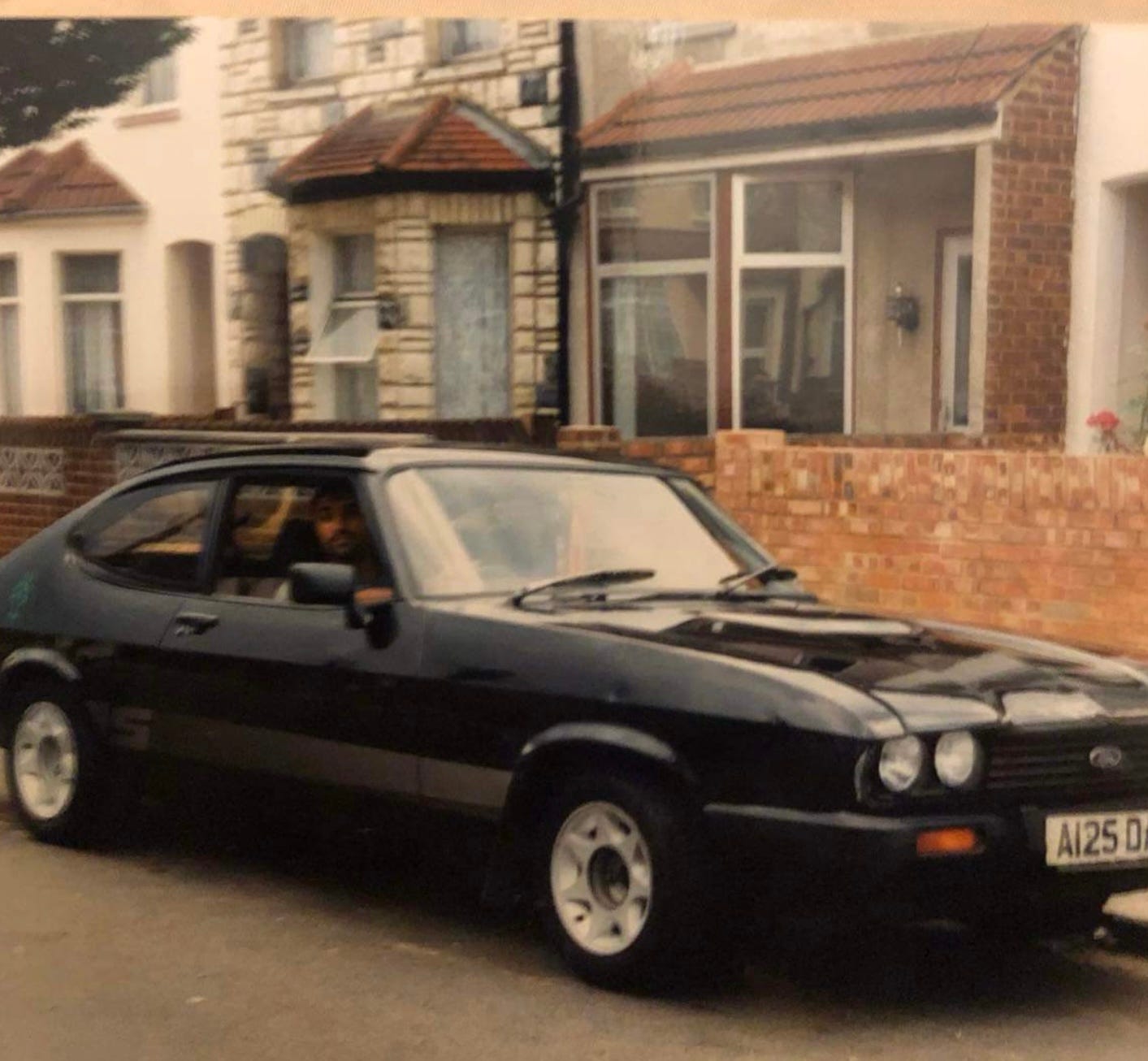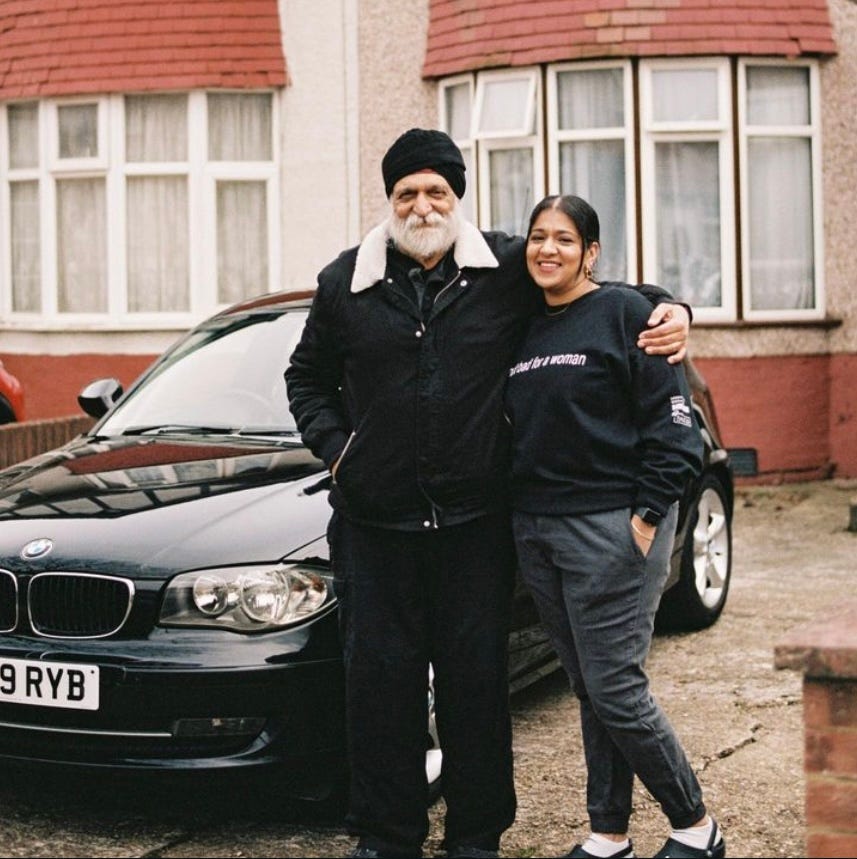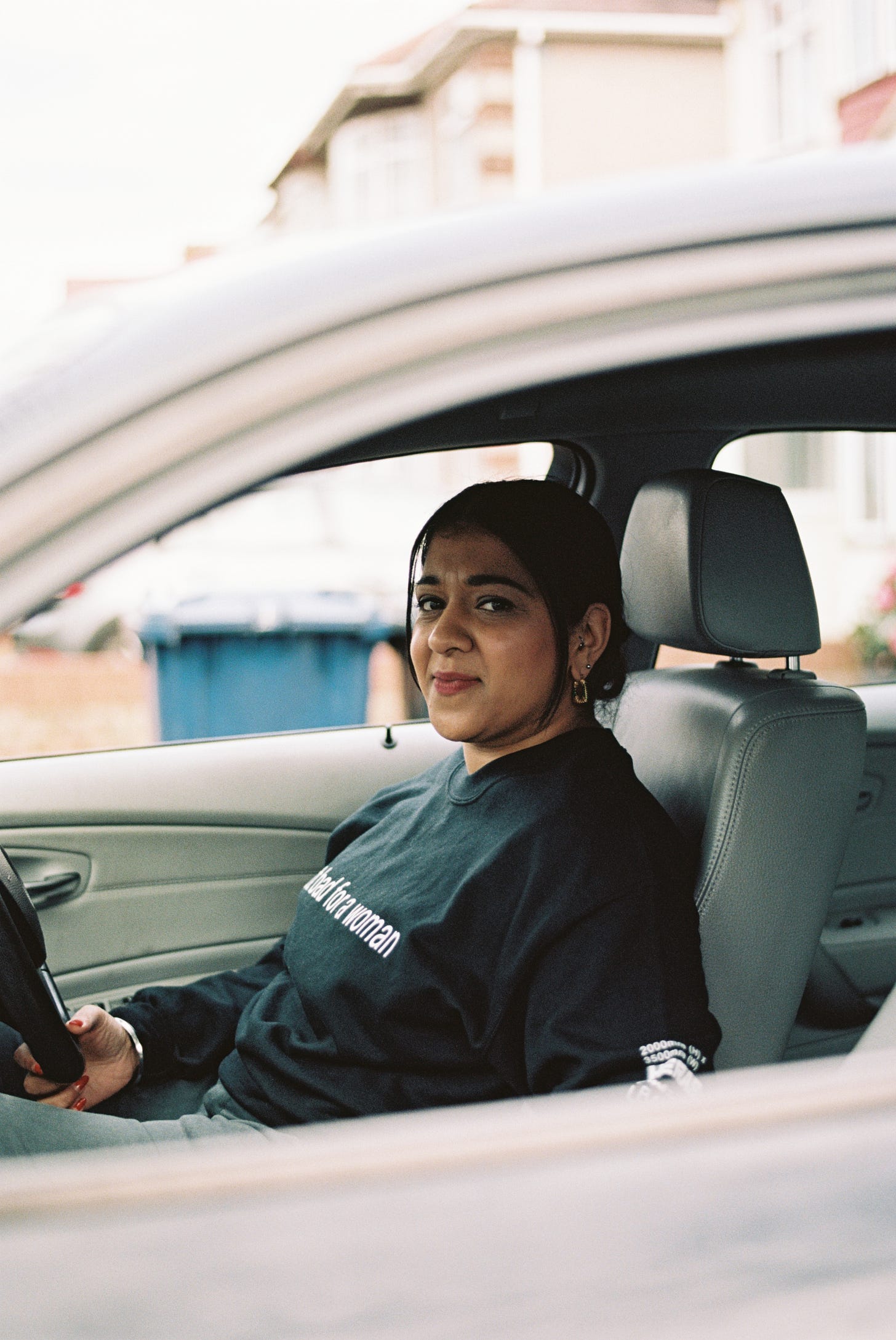After the release of the Zimmers of Southall films and the upcoming book it sparked conversations with my family and friends around memories of ‘cruising’. My friends and I were perhaps too young to cruise but the concept is very much itched into my mind. For our parents’ generation, older cousins or siblings cruising down Broadway after buying a new car, after an occasion or community event or just because it was Sunday- was a regular occurrence down Southall Broadway.
I vividly remember walking all the way back home from Broadway one rainy afternoon after a Vaisakhi Nagar Kirtan, excitedly pouring out on to the dining table our bags of goodies collected from various stalls with men and women distributing sweets and snacks along the route. Only to be bundled back in to my Mum’s tiny, white Honda Civic DSi to return to The Broadway via a set of wheels and a couple of Nishan Sahibs differing in size.
Once dawn fell, Southall Broadway was transformed. As the people running the stalls from earlier in the day pack up their pitches, the sounds of blaring basslines, beeping horns and the bellowing’s of ‘HAPPY VAISAKHI!’ fill the streets. The men and women enjoying the day Mela at Southall Park start taking to the Broadway to sing and dance in to the night. The cars have come to a standstill; by design. People are standing on their bonnets waving their flags. Children are pouring out of car windows waving their miniature versions. Similar evenings happened throughout the Calendar year whether it was the night of the last day of Ramadan or after a cricket match between India and Pakistan.
The unofficial street party in the evening after a Nagar Kirtan I learnt as I got older, was a controversial thing. After a while, there was no longer a Southall Mela on the day of the event and cruising with Nishan Sahibs slowed to a halt. Whatever we feel about the politics of mixing religious, cultural and social practices it was very much a part of the fabric of Southall culture and the result of a wider Southall obsession with showing off your car.
That’s what ‘cruising’ is- showing off your set of wheels, and if you took it very seriously, the ground-shaking sounds of your newly installed sub-woofer, a few revs of the engine and you’re good to go.
https://m.facebook.com/groups/100201460136254/permalink/2839222876234085/?
But why? Why was this a thing? There’s was a similar phenomenon in West London’s parallel world- Birmingham, on their Broadway equivalent- Soho Road. (see Sardara Gill’s ‘Soho Road Utte’- where he sings about picking up women on Soho Road). Places like Soho Road and Southall Broadway were and still are community hubs for Panjabi’s in the UK. It is where our grandparents and parents can buy their suits and sabjis, where you and your friends could stumble across Jay Sean and Juggy D filming ‘Eyes on You’ (this actually happened!) and where families can buy food for their special occasions namely jalebi from Jalebi Junction and samose from Shahenshah. Also, who remembers when Shahi Nan Kabab was held up by wooden stilts opposite Southall Station? Places like Southall Broadway are where Panjabis feel at ‘home’, in a place they feel comfortable enough to explore their own identity as a British Asian in a safe-space; so what was all the showing-off about?
Showing off your car wasn’t for an external audience. Car owners were driving around their cars just a few streets away from where they live. Displaying their car, their pride and joy was to show members of their own community they had made it, giving each other and themselves the comfort that they were doing OK; that the sacrifices their parents or their older aunties and uncles had to endure from leaving (and being kicked out) of the countries they were born and raised in, was worth it.
Cars have always been status symbols. Late Generation X and early Millennial Panjabis in Southall in the 80s and 90s were forming and figuring out their identities in the diaspora. Some born here and some who moved here too young to remember ‘home’ found themselves without the pressure their parents had with limited resources and language skills, but having to contend with often violent fascism from groups such as the NF. The pressure this group had was the need to ‘make it’, to stick up for themselves, to make sure the suffering and pain they and their parents were enduring was worth the hassle. Cars were a way Panjabis could start establishing a new identity for themselves; as British Panjabis.
Photograph courtesy of Kulwant Singh Badhwal archive.
This was also the generation attending reggae and dub sets at Tudor Rose or Southall Community Centre and bunking off school to attend Bhangra day timer parties at the Hippodrome or Zenith Discotheque, I imagine the car parks were another opportunity to show off their cars. There was also a gang culture forming in the underbelly of Southall during this time. In the wake of the rise of fascism in Britain and events such as the Southall Riots, the ‘Holy Smokes’ a largely Panjabi Sikh group emerged as a protection gang for Southall’s Asians against racist and violent groups like the Teddy Boys and the NF. Eventually the gang split creating the ‘Tooti Nungs’, a rival gang. These groups turned against each other and as they battled for top spot in the organised crime scene of Southall in the late 80s and 90s, their cars became a staple feature of their respective identities; found to be cruising around West London in either a Stag, Capri or Granada.
Whether it was to blast your speakers and beep your horns on the night of Vaisakhi, to cart you and your friends to a day timer or to feel accepted by the ‘holies’ or the ‘toots’, Panjabis were asserting themselves and their identities in Britain through buying trendy cars and taking it for a cruise down Broadway.
Photo courtesy of Hark1karan.
Moving a few decades in to the future, the children of the original Broadway cruisers are restoring, buying and showing off classic-cars, the types of cars that would have been paraded up and down Broadway are now a returning feature to West London; the Uxbridge Road, Lady Margaret Road and the A40. My peers and the new Gen Z currently passing their driving tests are exploring an updated version of British Panjabi identity through classic-car culture, holding on to the nostalgic memories of their parents’ teenage years- realising the unique British Panjabi culture that came before them, using it and forming a new sense of self and deciding what a British-Panjabi identity means for them.
Watch both films below and support the Zimmers of Southall kickstarter campaign for the photography book! Can’t wait!
http://kck.st/4cFmQWU

